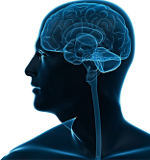American College of Rehabilitation Medicine updates its 1993 Definition of Mild Traumatic Brain Injury
As reflected in the posts on this blog over the last several years, scientific understanding of “mild traumatic brain injury” (Mtbi) – often referred to as “concussion” – has advanced considerably over the last 30 years. Unfortunately many physicians, including those on the “front lines” for these injuries–in emergency rooms and primary care clinics–have not kept up with this evolving science. In emergency rooms, the focus is typically on ruling out catastrophic injuries. The signs and symptoms of concussion are often missed. Even where the symptoms are recognized, many physicians mistakenly believe, based on outdated information, that the symptoms of mTBI can be ignored and that virtually everyone recovers spontaneously. Compounding this misinformation is inconsistency in the definitions found in the literature, in many cases depending on when the definition was adopted.
In 2019 – to address some of these problems – the mTBI Task Force of the American College of Rehabilitation Medicine (ACRM) Brain Injury Special Interest Group undertook an updating of the 1993 ACRM definition of mTBI – one of the most widely recognized definitions. This work included rapid evidence reviews, an expert survey (to rate the diagnostic importance of various clinical signs, symptoms, test findings, and contextual factors), public and stakeholder engagement, and a Delphi consensus process with an international, interdisciplinary panel of clinician-scientists. The working group included 17 ACRM mTBI Task Force members and an external interdisciplinary expert panel of 32 clinician-scientists from seven countries and various fields such as sports, civilian trauma, and military settings. The new criteria adopted by this group are based on syntheses of current research evidence and went through several rounds of revision until more than 90 per cent of the expert panel agreed with what they were proposing. The process was led by researchers from the University of British Columbia. and Harvard-affiliated Spaulding Rehabilitation Hospital. The new criteria are designed to be applicable across a range of injury circumstances, including civilian trauma, sports-related injuries and military contexts. Some of the important features of the new criteria include the following:
- They take into account blood tests and tests of thinking skills, balance, and vision that can contribute to the diagnosis of TBI. (These assessments – referred to as “Clinical Examination and Laboratory Findings” – were not a feature of previous criteria.)
- Diagnosis always requires a “biomechanically plausible mechanism of injury” but recognizes that this can include “acceleration/deceleration movement without direct contact between the head and an object or surface.”
- They permit diagnosis based solely on neuroimaging evidence of TBI (coupled with a biomechanically plausible evidence of injury) but does not require neuroimaging findings to make a diagnosis (reflecting currently understanding that most TBIs do not produce neuroimaging findings.)
- They permit diagnosis based solely on at least two acute symptoms (like headache, nausea, dizziness, sensitivity to light, mental fog and emotional lability) if coupled with “at least one clinical or laboratory finding” (like cognitive impairment, balance impairment, oculomotor impairment, or elevated blood biomarker indicative of intracranial injury.)
- They permit diagnosis based solely on one (or more) “clinical signs” which can include loss of consciousness, amnesia (gap in memory), or alteration of mental status immediately following the injury, such as slowness to respond to questions of instructions, agitated behavior, reduced responsiveness to external stimuli, of disorientation to time place or situation.
- They recognize that many of the signs and symptoms of concussion can be the result of unrelated medical conditions. They therefore include a clause stating that “confounding factors do not fully account for the clinical signs, acute symptoms, and clinical examination and laboratory findings that are necessary for the diagnosis.”
- They distinguish cases where a definitive diagnosis can be made and cases where there is uncertainty such that the appropriate label is “suspected mTBI.”
Although it may take some time for this consensus definition to be integrated into world wide practice, it is hoped that it will eliminate some of the current confusion in the field and lead to more consistent treatment.

